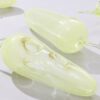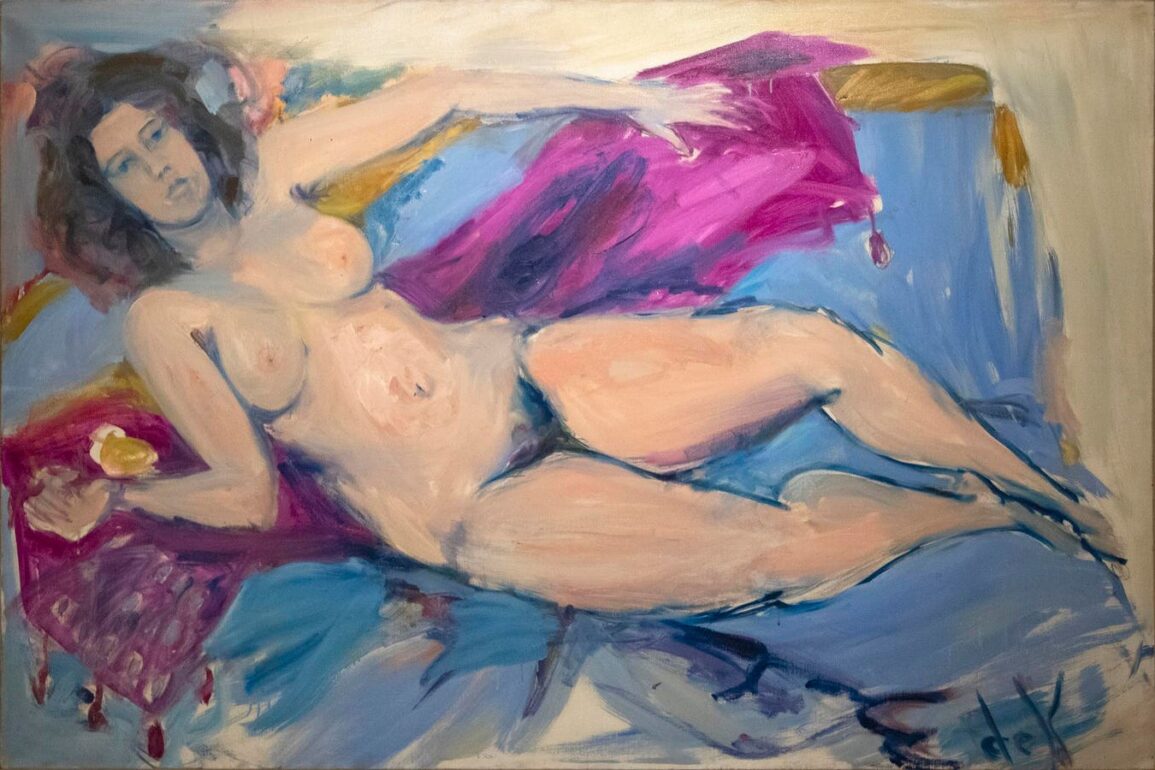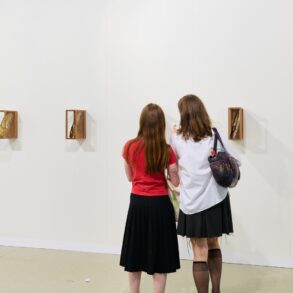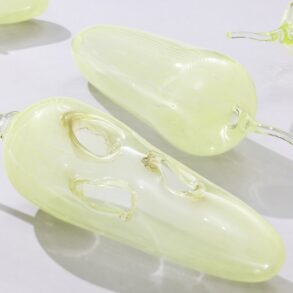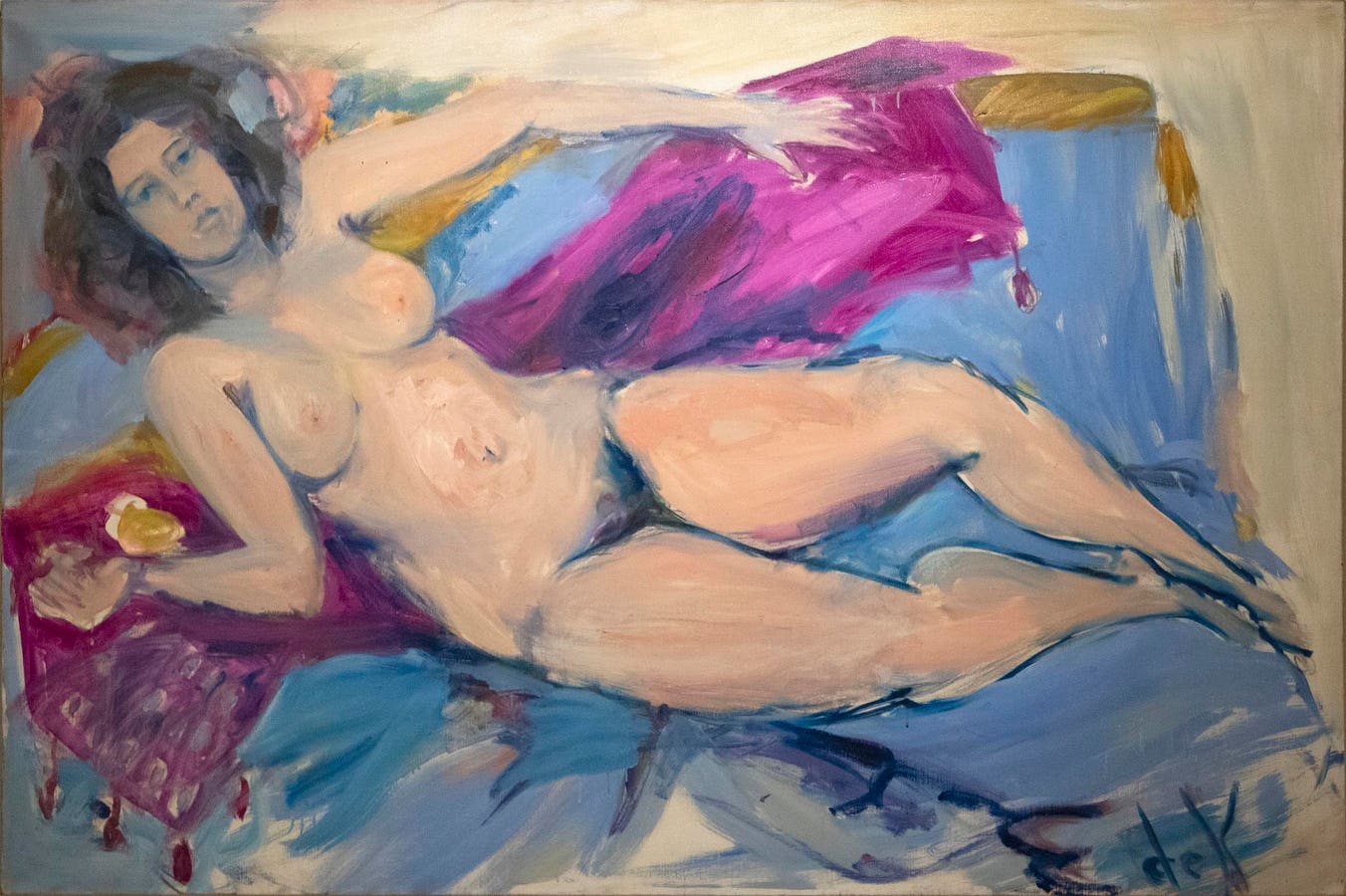
When the Muskegon (Michigan) Museum of Art opens its $15.4 million expansion on Thursday, February 6, 2025, the institution founded in 1912 will do so with an amazing new gift leading the way: 70 paintings on view from the collection of Steven Alan Bennett and Elaine Melotti Schmidt. The artworks represent a portion of the married couple’s esteemed collection of figurative realist paintings by women artists.
The expansion, doubling the size of the museum and redefining the MMA’s role as a national arts destination, will be named the Bennett-Schmidt Pavilion.
One hundred and sixty-seven paintings from the Bennett Collection of Women Realists have been donated to the Muskegon Museum of Art, most of them never having been on public view outside of their San Antonio home. Included are artworks from contemporary artists and major name historic painters including Artemisia Gentileschi (1593–1653), Mary Cassatt (1844-1926), and Elaine de Kooning (1918-1989).
The 1961 de Kooning is especially significant being the only known female nude she ever produced. An interesting feature of the Bennett Collection, not only are all the paintings by female artists, all the paintings depict women. The sitter in the de Kooning painting is Denise Lassaw, daughter of Abstract Expressionist sculptor Ibram Lassaw (1913–2003). Ibram Lassaw was one of Willem de Kooning’s–husband of Elaine’s–best friends.
When Bennett and Schmidt purchased the painting, Bennett tracked down Denise Lassaw to discuss the story of the painting.
“When she was in high school, Denise Lassaw became the studio assistant to Elaine de Kooning; on Good Friday in 1961, Elaine de Kooning had just sold a painting for real money and had gone shopping,” Bennett told Forbes.com. “She bought four pairs of the same shoe in four different colors and a bag of jellybeans and had come back to the studio in a good mood. She said to Denise, ‘Take off your clothes, we’re gonna’ do a painting!’ So Denise stripped down and laid on the couch in the studio, and–this is Denise’s words–‘I slathered my nipples and my crotch with the jellybeans, and Elaine painted me, and from that moment forward, our name for the painting was Nude with Jelly Bean.”
Nude with Jelly Bean is a massive, 4-foot-tall by 6-foot-wide, dramatically colored, vigorously painted artwork. Bold. Confrontational. Everything the couple looks for in a painting.
“The quality that gets work into the Collection is ‘oomph,’ which we define as that quality which demands a viewer look at the painting,” Bennett explained. “We want to pick stuff where people say, ‘That’s incredible!’ Sometimes it’s color, composition, monumentality, delicacy, technical mastery, but whatever it is, when you see the painting, you say, ‘My God, yeah!’”
Nude with Jelly Bean–my God, yeah!
The Bennett Collection Takes Shape
Artemisia Gentileschi (1593-1653), “Self-Portrait as Clio, the Goddess of History,” oil on canvas, 22” x 20” ca. 1640.
The Bennett Collection
Bennett and Schmidt met on eHarmony and married later in life. Bennett earned a bachelor’s degree in art history and put himself through law school working as a professional photographer. Schmidt’s interest in art comes from travel and museums.
“When we got together, I had a bachelor pad, and I had a job where I was on the road all the time, there was nothing on the walls,” Bennett remembers.
“It actually looked like a hotel rather than a home,” Schmidt told Forbes.com. “We started to discuss what to put on walls.”
That was in 2009, a good time to be in the market for paintings by women. Women artists–even the best of the best–have always been underrepresented in galleries, museums, and private collections. While that historical disrespect has abated in recent years, when Bennett and Schmidt began targeting women figurative painters to build a collection, the market for that work favored the buyer.
Bennett and Schmidt are wealthy, but not crazy wealthy to the point where they can purchase artworks at the top of an artist’s market. Take their 1640 Gentileschi painting. The couple acquired it from The European Fine Art Fair in New York just prior to Gentileschi “blowing up” as the result of a major retrospective exhibition initially planned for 2020 at the National Gallery in London.
Her paintings now routinely sell at auction for millions of dollars.
“We recognized we could contribute (to promoting female artists) in this way, but it also benefited us because we could get more for our dollar.” Schmidt said. “At the time, there was an abundance of supply because people were not collecting women. Since #metoo, things have changed, dramatically, and that’s really good, especially for historic women artists.”
Bennett and Schmidt also began collecting exclusively contemporary art, which is much less expensive, and less expensive still for early career female realist painters. Their collection continues to be primarily focused on contemporary.
“We decided to help the gravitas of our collection we would start to collect historic women,” Schmidt explained. “It worked. People are more interested if you say you have some big-name people like Elaine de Kooning and Gentileschi.”
The Bennett’s base their collection on two similar beliefs. First, women painters have not received the same degree of acceptance as their male counterparts. Second, over the course of time, figurative realism has come to be institutionally disfavored, unfairly disdained by those who prefer abstract or conceptual work.
What was their motivation for narrowing their collecting focus to the uber-niche of female figurative realist painters painting exclusively female subjects?
“We had a lot of long discussions, philosophical ones about it,” Bennett said. “One thing we came to think as we collected women painters, we thought they saw themselves as women differently than men saw them as women. This whole business of the male gaze and the female gaze. We were of the view that women tend to be more honest about what they look like and less inclined to idealization, they’re more willing to focus on the way people really appear, rather than some erotic ideal.”
In addition to using their platform as collectors to celebrate women artists and raise awareness of the historical inequalities women face in the arts, they are also the founders of The Bennett Prize, a juried biennial competition launched in 2019 for contemporary women artists who specifically practice figurative realism. The Prize comes with $50,000 and a solo show that travels the U.S. The Muskegon Museum of Art is also host museum for The Bennett Prize.
Why Muskegon?
Andrea Kowch (born 1986), “The Courtiers,” acrylic on canvas, 36” x 60,” 2015.
The Bennett Collection
Prior to display in Muskegon, the Bennett Collection’s Gentileschi painting hung in the couple’s dining room.
“We kept saying, ‘This shouldn’t be in our dining room, this should be in a museum where a lot of people can see it,’” Schmidt said.
But how come Muskegon, a city with fewer than 40,000 residents relatively isolated on the western border of the state on the shores of Lake Michigan?
“We talked to artists and curators and galleries and museum people because we were trying to figure out how we could help in the most powerful way,” Schmidt said. “We talked to Muskegon. When we were interviewing museums, we went around, and they got our mission. They’re not hierarchical. They get things done, and my goodness, those people work so hard.”
The couple are also Midwesterners. Bennett is from Illinois, Schmidt a Michigander.
“Muskegon as a museum and as a community is transitioning into a much more attractive resort destination in the Midwest, it’s got a lot of culture,” Bennett said. “It’s got a lot of those things that attract people.”
Between the Muskegon Museum of Art itself, loans of their artwork from the museum to other institutions, and the Bennett Prize artwork touring nationally, the couple are confident their collection will receive appropriate exposure.
More From Forbes
Check out my website.
This post was originally published on this site be sure to check out more of their content


